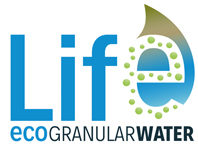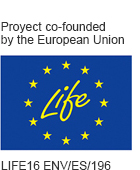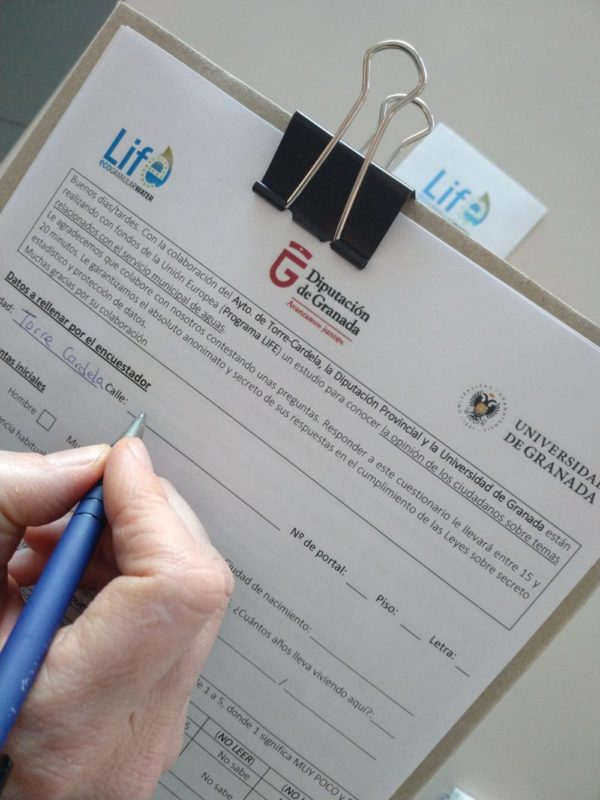As part of the economic-environmental study, which is doing in the framework of the ECOGRANULARWATER Project, a survey was passed among the citizens of Torre Cardela. The fieldwork was carried out between December 2018 and January 2019. The person in charge of interviewing the population, went through all the dwellings in the municipality. On a population of 759 inhabitants, information was collected from 468 residents.
The questionnaire had several sections. The objective was to obtain information regarding the following topics: environmental awareness; perception of the water service, water quality and water price; willingness to pay in order to contribute to the financial sustainability of municipal water service; and socioeconomic characterization of the interviewee.
Here are some of the results of the questionnaire:
- Between 0 and 10, the residents’ score of the quality of the water that currently goes out through the tap is somewhat higher than 5. However, it is striking that there is a high dispersion in the response, with very polarised perceptions according to the interviewee. Among the different organoleptic characteristics of tap water, the worst valued aspect is the flavour. 15% of the interviewees answered that water always or almost always has an unpleasant taste. In addition, another 27% of those interviewed responded that water often tastes unpleasant.
- As a consequence of the above, a high percentage of the population chooses to apply some measure in the household. While 43% of those interviewee drink water directly from the tap, 26% filter the water before drinking it and 31% choose to buy bottled water.
- In any case, the majority of the interviewee agree that the perceived quality of the water improved with the new reverse osmosis plant. The citizen perceives that the characteristic in which the improvement was most noticeable was turbidity, but the perception of the smell and taste of tap water has also improved. Paradoxically, 50% of those interviewed replied that before the current plant they drank water directly from the tap, which is somewhat higher than the current figure. Among the population that took measurements at home, the percentage of the population that drank bottled water was higher.
- Although the population was generally aware of the importance of access to good quality water, only about 20% of respondents said they had an idea of the consequences of drinking water high in nitrates. In this order of ideas, only 6% of respondents are aware that a few years ago the water was declared unfit for human consumption. Among the few people who respond because the water was declared unfit, the majority respond that it was caused by high level of nitrates in water.
- Although the population was informed that the income from the water service is far from covering the total costs of the service, only 29% of respondents were willing to pay a higher amount for the water bill. The answer is coherent, if we take into account that only 28% of those interviewed think that water is cheap or very cheap. In fact, the majority of those who responded that they would not be willing to pay more for water stated that they did not have sufficient capacity to pay. Second, those who did not express a willingness to pay more for water argued that they have the right to receive good service without having to pay more on the quarterly bill. Part of the population also said that water service should remain subsidized. Finally, with less frequency, there were also those who responded that in case of making an additional payment, the money would be wasted or destined to another item other than the water service.
In the coming months we will analyze the data in greater depth. The results obtained will make it possible to issue conclusions and recommendations of interest for the municipal management of the water service.



